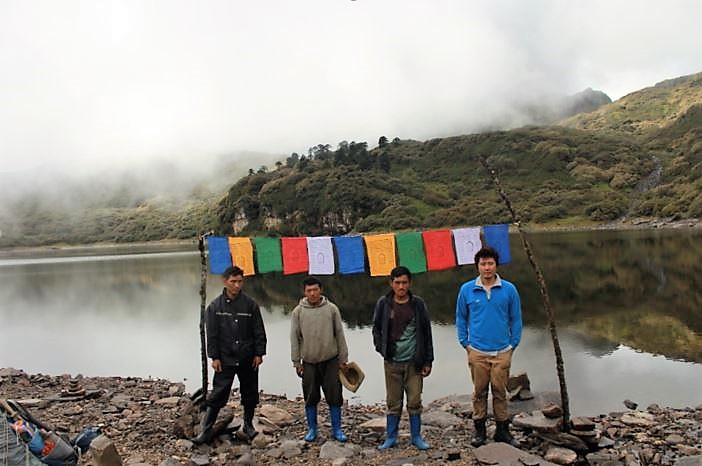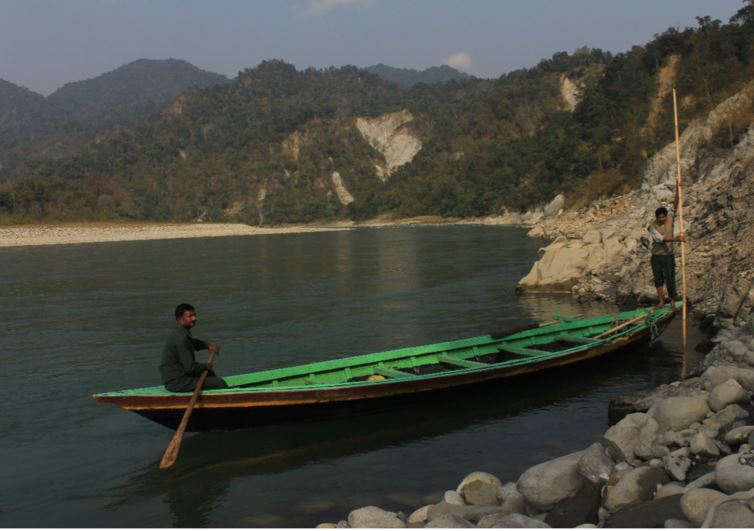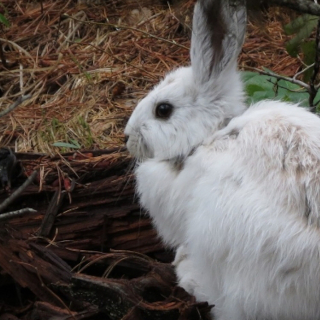Introducing new Mills lab MS student Tashi Dhendup

A new student from Bhutan joins the Mills lab:
I am Tashi Dhendup and I am from Bhutan. I am very excited to be here at Missoula and even more thrilled about studying wildlife biology at the University of Montana. Making it to Montana, of course, had to come through a lot of hard work and an overwhelming shower of support from Dr.Scott Mills, my advisor; Dr.Nawang Norbu, Director, UWICER; Mr.Tshering Tempa, Chair, Center for Conservation; and Dr. Jim Sanderson, Founder, and Director, Small Cats Conservation Alliance. I am equally thankful to the WWF Russell E Train Fellowship Education for Nature for sponsoring my tuition and living expenses.
Prior to joining the University, I have been working as a forestry officer for 4 years at the Ugyen Wangchuck Institute for Conservation and Environment Research under Bhutan’s Department of Forest and Park Services. At the institute, I have been involved at the Center for Conservation and have been part of many interesting and important research and conservation activities. I have been extensively involved in doing camera trapping exercises in central, southern and eastern Bhutan and have worked on species from tigers to other smaller felids. We have been able to gather evidences of tiger movement in Bhutan over hundreds of kilometers, record the highest elevation of the presence of tigers in the world, also for Asiatic golden cats and marbled cats, new locality records for the vulnerable Bhutan Takin and for the critically endangered White-bellied Heron and also publish the existence of 7 cat species in an area of less than 1000km2. On my efforts towards highlighting research and conservation of the often-neglected small cat species in Bhutan, I was accepted as a National Geographic Young Explorer in 2015 to work on them and in early 2017, was also invited to become a member of the IUCN SSC Cat Specialist Group.
One of the biggest hindrances which I see to effective conservation in Bhutan is a lack of information on species and this has led to ineffective status assessments. This, in turn, has limited the authorities in setting priorities for conservation investment. This lack of information can be attributed to fewer people trained in research and I feel that an opportunity to study at one of best wildlife biology schools in the world will equip me with the necessary skills to fill the information gap to some extent. For my MS project, I will be working on tigers. Tigers are a highly-endangered species and has been driving conservation priorities across the world including Bhutan. Estimation of demographic parameters such as density and population size using the latest robust tools is crucial to informing sound management interventions. In my study, I propose to compare population sizes and density estimates from camera trap data, non-invasive genetic data, and estimates drawn from the combination of camera trap and NGS data. Recent studies have shown that combining data from multiple sources (like camera traps, NGS, and telemetry) provide improved density estimates as compared to estimates from studies done separately. I look forward to wonderful two years in Montana.
Tashi Dhendup, MS Student
A clouded leopard in Royal Manas National Park (Picture courtesy: UWICER/RMNP):

A camera trapped photo of a man:

In Royal Manas National Park:

Feature photo: With friends from the field in one of my former study areas in Lhuntse Bhutan (>4000masl).
